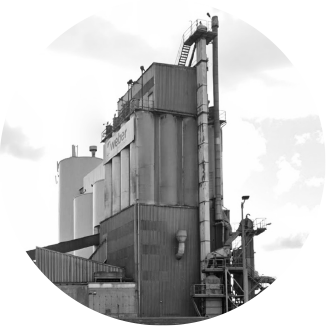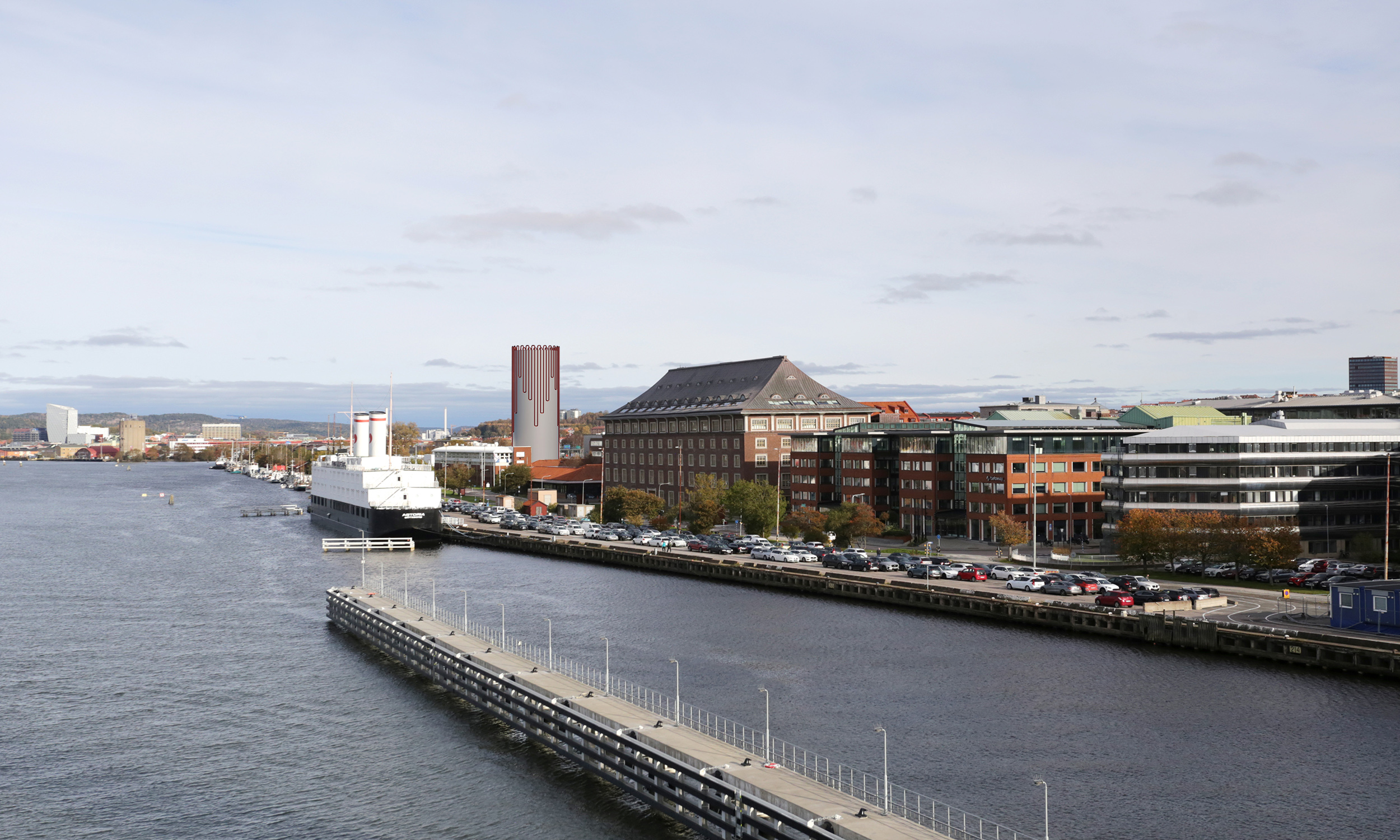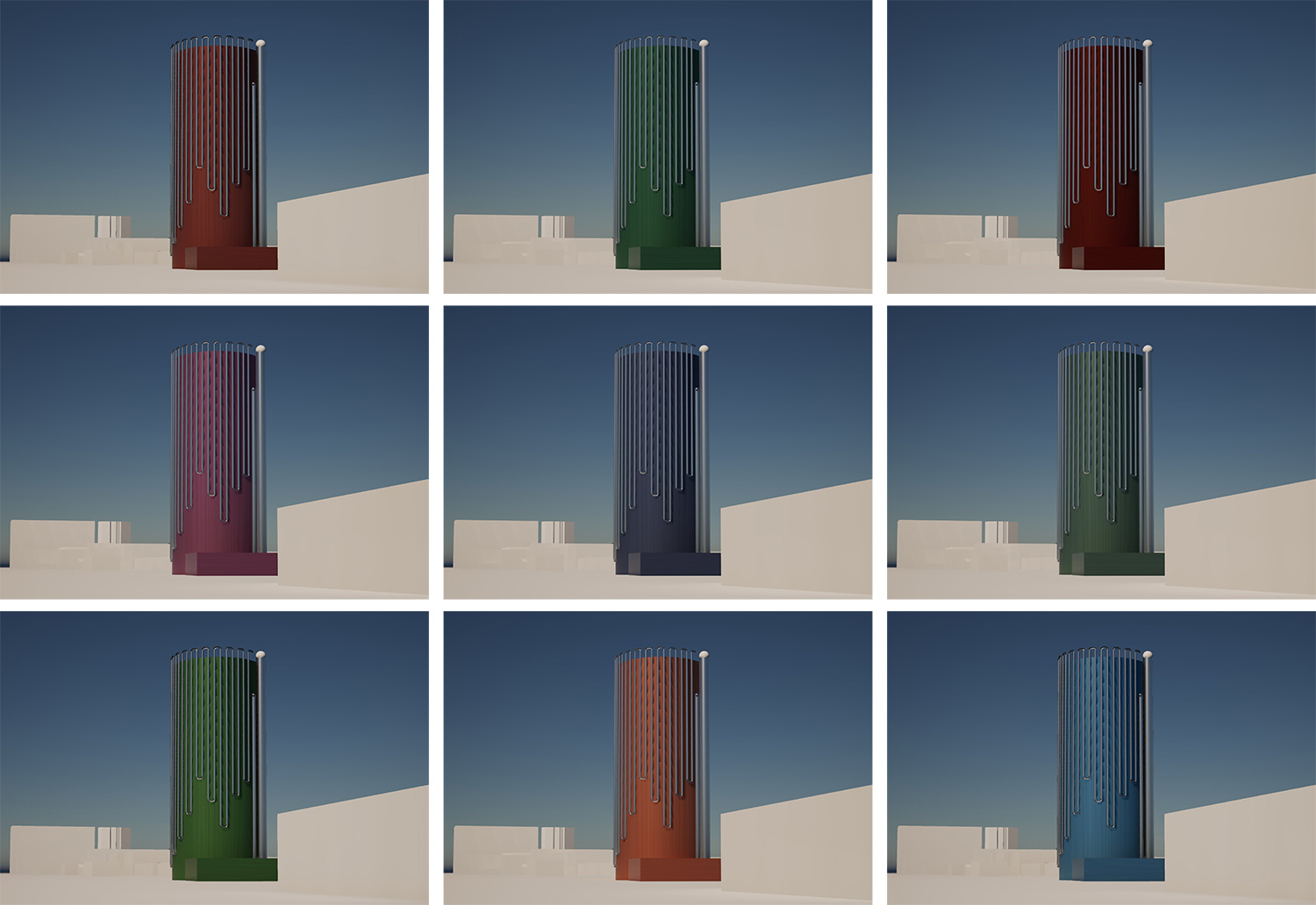I RÖRELSE
FACTSHEET
PLACE: Gothenburg, Sweden
AREA: 1.000 m2
YEAR: 2024
CLIENT: Göteborg Energi AB
TYPE: Water tank for district heating plant
STATUS: Open international competition, proposal
TEAM: Audun Hellemo/Kristin Hilde
RATING
SCALE (small>large)
STATUS (idea>built)
COMMERCIAL ($>$$$)
The new water tank for Göteborg Energi does not attempt to hide its infrastructural significance; instead it reuses old ventilation ducts from refurbished buildings in the Gothenburg area as a new decorative element showcasing the city´s regional role as a transportation hub, the heating plant´s role in the city centre and the industrial history and heritage in the future development. Like an industrial large scale veil over the new tank, it creates a playful and symbolic landmark that changes according to distance, time of the day and status of the area development surrounding it.
Den mätta dagen, den är aldrig störst.
Den bästa dagen är en dag av törst.
Nog finns det mål och mening i vår färd
– men det är vägen, som är mödan värd.
«I Rörelse» (1927), Karin Boye
The sated day is never first.
The best day is a day of thirst.
Yes, there is goal and meaning in our path –
but it’s the way that is the labour’s worth.
«In Motion» (1927), Karin Boye, translated by David McDuff




GOTHENBURG AND THE WORLD
As an important regional hub, Gothenburg is closely connected to the rest of the world by train, highway and a large port which daily moves goods, cars and people around and through the city on their way to ever new places. Gothenburg’s industry and production is closely linked to car production, logistics and movement, which underlines Gothenburg’s dynamic role in the story of Sweden.
THE HEATING PLANT AND THE CITY
Göteborg Energi provides heating to large parts of the city through an extensive pipe network and is, unlike the traffic system, an invisible part of the city’s infrastructure which connects together parts of the city and buildings below ground. In a time where more existing buildings should be renovated, part of their infrastructure has a potential for new use: the many meters discarded ventilation ducts can be taken from the interior of the building and be given a new, decorative role in the history of the importance of infrastructure. In this way the new tank connects buildings from around the city and reuses discarded buildings elements to minimizes the materials used.




THE TANK AND THE NEIGHBOURHOOD
The new accumulator tank is being built in a part of the city undergoing major changes. In the long run, the industry will being forced out and replaced by tidy residential areas where industrial infrastructure is perceived as a noisy problem and not a quality. The new tower should therefore maintain the character of the site, form and material use as an important storyteller in an area undergoing rapid change.
THE PROJECT AND THE FUTURE
Today the site is a non-place, and is mainly experienced from afar or from the passing roads. In the future the tower will be placed in the middle of a new development and thus should be able to adapt and change together with the neighbourhood. The concept therefore keeps the part of the surface closest to people empty as a canvas for future co-creation.


Gothenburg is an important transportation hub in the south of Sweden.

Discarded elements from buildings being refurbished serve as the new elements for the new water tank.


The added ventilation ducts are more dense where the tank is most visible, either from a distance or where the surrounding roads limit future development.

Closer by, and on ground level the new tank is a canvas for added activities that will flourish as it becomes more embedded in a new neighborhood.



Construction drawings





The surrounding area´s colours and material use provide the starting point for colour tests.
